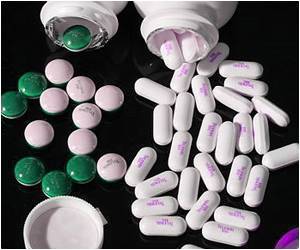A drug that failed to treat osteoarthritis can help in reducing opioid tolerance and physical dependence. The drug blocks the neuropathic pathway and decreases the opioid dependence.
Highlights:
- Opioid tolerance and its physical dependence can be reduced by a drug that failed to treat osteoarthritis.
- The drug did not show any efficiency in treating osteoarthritis.
- The experimental drug reduces the death rate due to drug overdosage.
TOP INSIGHT
Opioid addiction can be treated by the drug that failed to treat osteoarthritis and it reduces the death rate due to overdosage of drugs.
"The potential to quickly begin using this compound in combination with opioid-based medication to treat pain and reduce addiction makes this discovery very significant," said lead investigator Andrea G. Hohmann, a Linda and Jack Gill Chair of Neuroscience and professor in the IU Bloomington College of Arts and Sciences’ Department of Psychological and Brain Sciences. "We already know this drug is safe for use in people, so moving into human trials will not require as many regulatory hurdles."
There was a need for a non-addictive alternative drug for opioid medicines as there was a high increase in death rate due to a drug overdose. According to the Centers for Disease Control and Prevention, in 2016 about 64,000 Americans died due to a drug overdose. In order to tackle the situation in 2017, Indiana University (IU) launched the Responding to the Addictions Crisis Grand Challenge initiative to invest about $50 million to reduce opioid addiction in Indiana.
An experiment was conducted to test the efficiency of the drug to treat pain and reduce addiction symptoms. IU researchers administered the drug compound along with opioid morphine into male mice that suffered neuropathic pain. Morphine initially reduced the pain and the mice quickly developed tolerance against the effect of morphine. Patients required higher doses of the drug in order to achieve relief from pain.
When a low dose of the experimental drug was combined with morphine and administered to the mice, it did not show any tolerance towards morphine and the lack of tolerance remained even after the discontinuation of the drug. The scientists discovered that the experimental drug produced sustained pain relief only at higher doses.
The results of both the experiments suggest that the experimental drug can be used in combination with opioids in order to prevent opioid tolerance and to reduce the pain with lesser side effects.
About Opioid Dependence
Opioid is a drug used to relieve pain, by lowering the number of pain signals sent to the brain. These medicines are mainly prescribed to reduce pain that is caused due to toothache, injuries, surgeries and cancer. These drugs are safe when used in right quantity but if the patients misuse the drug, it becomes an addiction. Some of the opioid drugs are morphine, tramadol, heroin, oxycodone and opium. According to American Society of Addiction Medicine (ASAM) in 2015 about 20,101 Americans died due to opioid drug over dosage.
Reference:
- Xiaoyan Lin, Amey S. Dhopeshwarkar, Megan Huibregtse, Ken Mackie and Andrea G. Hohmann. Slowly Signaling G Protein–Biased CB2 Cannabinoid Receptor Agonist LY2828360 Suppresses Neuropathic Pain with Sustained Efficacy and Attenuates Morphine Tolerance and Dependence Molecular Pharmacology, (2018) DOI: https://doi.org/10.1124/mol.117.109355
Source-Medindia
 MEDINDIA
MEDINDIA





 Email
Email










